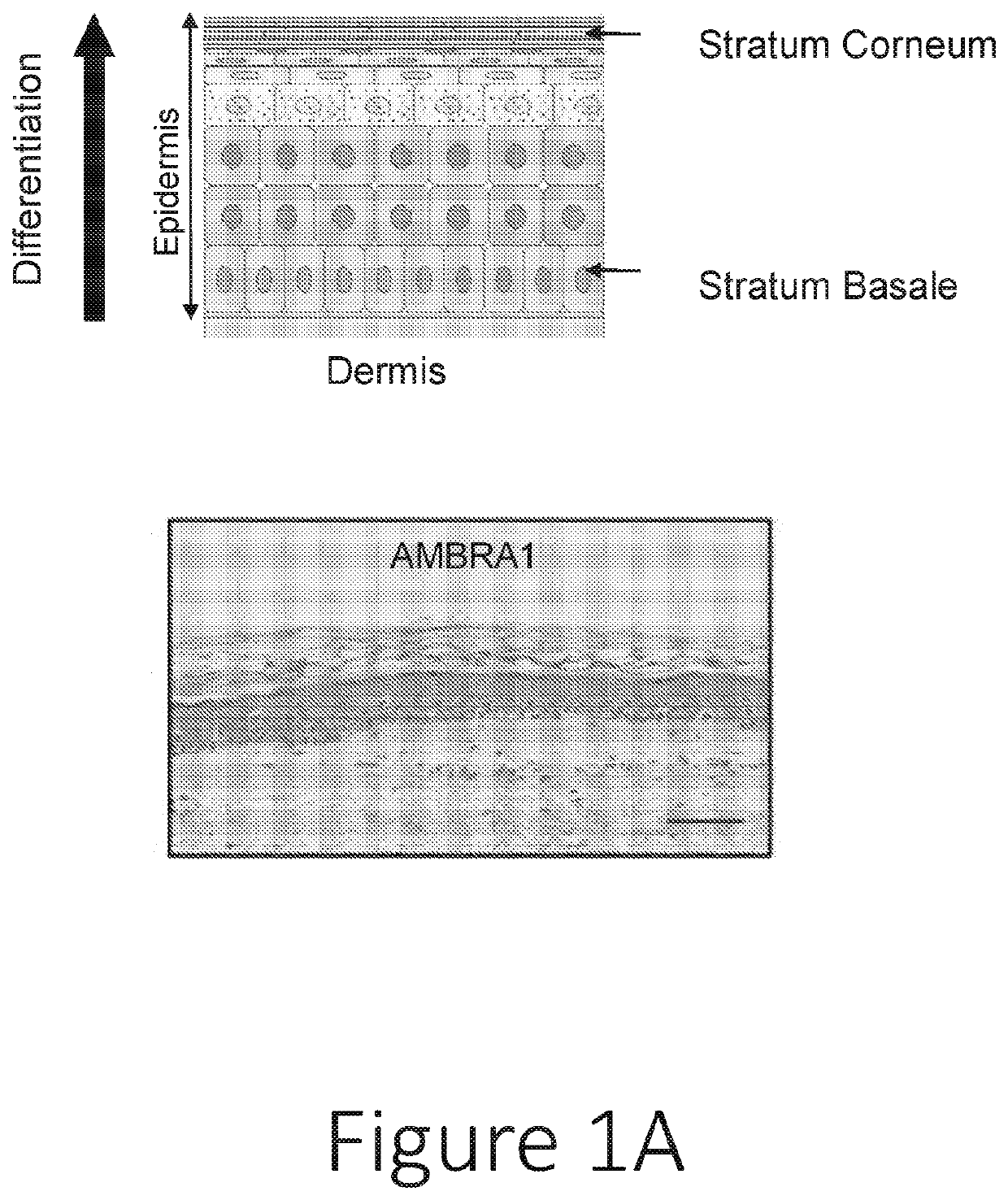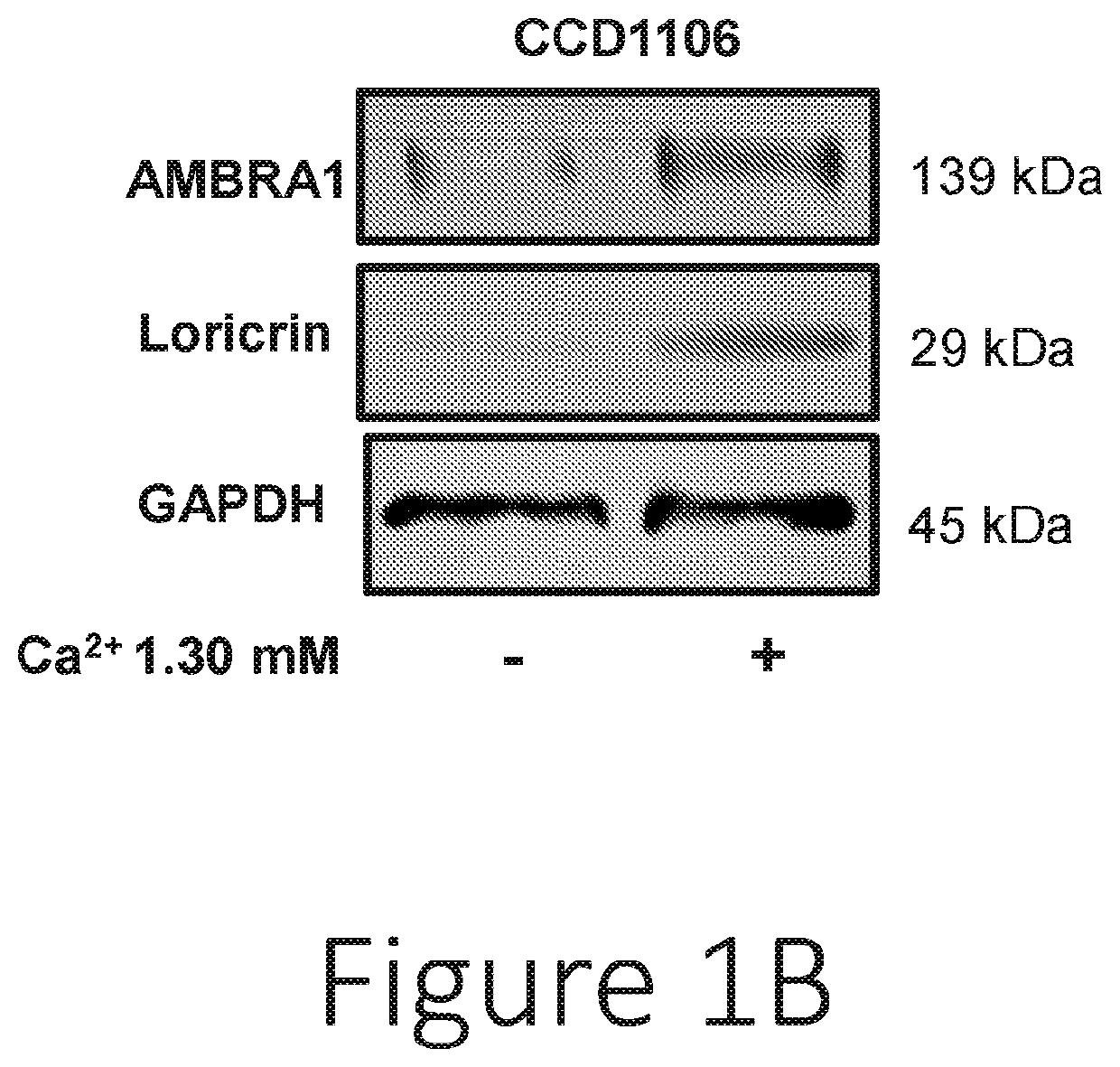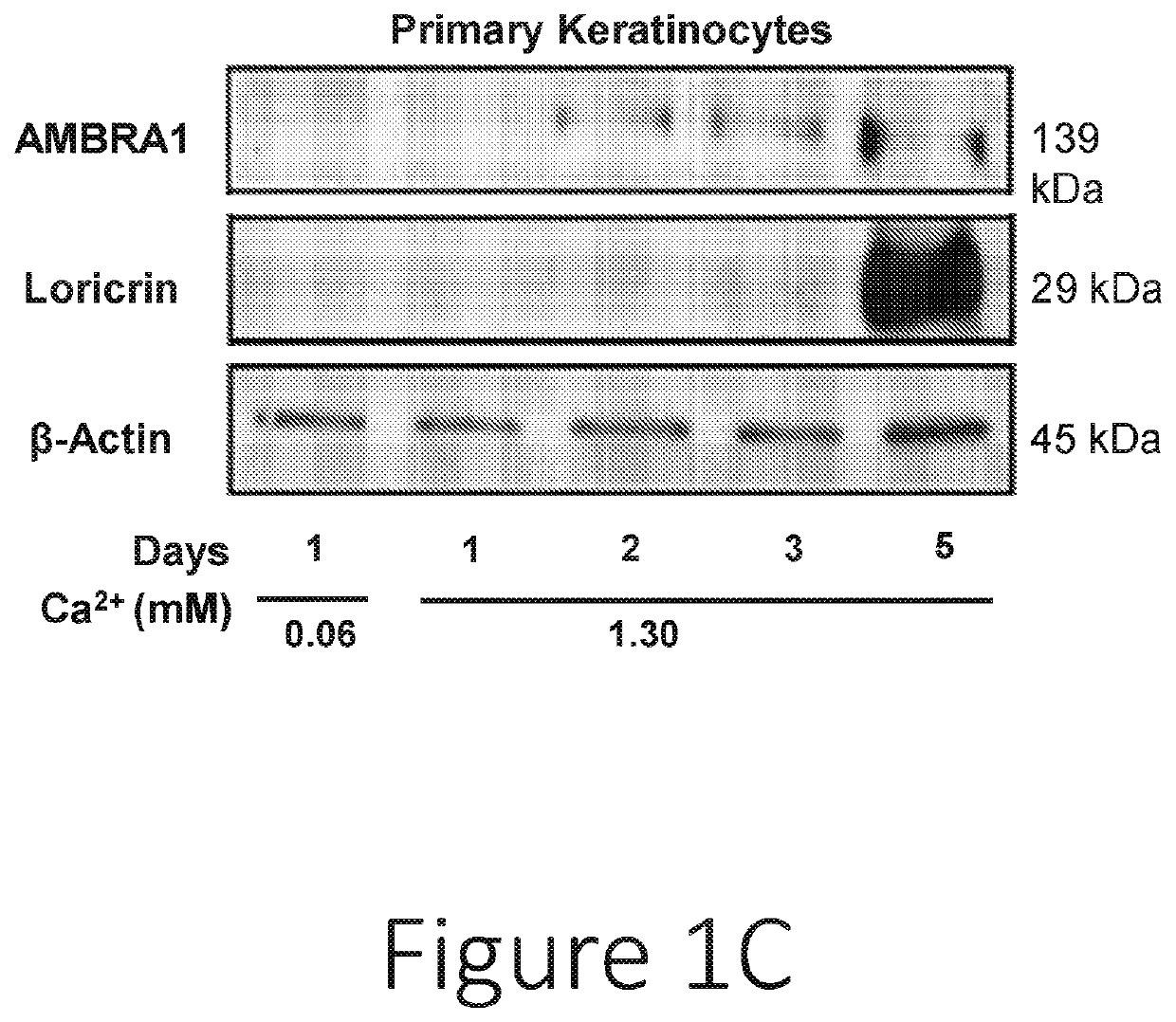Biomarkers for disease progression in squamous cell carcinoma
a squamous cell carcinoma and biomarker technology, applied in the field of squamous cell carcinoma biomarkers, can solve the problems of unnecessary intensive and costly follow-up schedules, unoptimized systems, and unsatisfactory systems
- Summary
- Abstract
- Description
- Claims
- Application Information
AI Technical Summary
Benefits of technology
Problems solved by technology
Method used
Image
Examples
example 1
s a Biomarker of Keratinocyte Differentiation
[0256]IHC analysis of AMBRA1 expression in normal skin in vivo revealed increased expression from the basal layer to the stratum corneum in line with increasing keratinocyte differentiation (FIG. 1A). Calcium-induced differentiation of CCD1106 or primary keratinocytes for 5 days in vitro was also reflected by increased expression of AMBRA1 in line with expected changes in other differentiation markers such as loricrin (FIG. 1B / C).
[0257]Furthermore, siRNA mediated knockdown of AMBRA1 in primary calcium induced differentiated keratinocytes results in deregulated differentiation, as evidenced by decreased loricrin mRNA and protein expression (FIG. 2). These observations are also associated with an increase in keratinocyte proliferation and collectively highlight the critical role for Ambra-1 in normal keratinocyte differentiation as well as suppression of excessive cellular proliferation.
example 2
mbra-1 Expression in cSCC Tumours Results in Loss of Terminal Differentiation Leading to More Aggressive Phenotypes
[0258]IHC analysis of a retrospective cohort of cSCC sub-type biopsies confirmed increased Ambra-1 expression in normal epidermis in-line with epidermal differentiation. However, within the cSCC tumour itself a distinct difference in Ambra-1 expression was observed between “well-differentiated” and “poorly-differentiated” tumours; with “poorly-differentiated” tumours exhibiting markedly reduced / absent Ambra-1 expression compared to the normal epidermis, or well-differentiated tumours. Similar reductions in Ambra-1 expression were also detected in dysplastic cells comprising actinic keratoses or Bowen's disease (FIG. 3).
[0259]Taken together, these data show loss of Ambra-1 expression in cSCC results in loss of terminal differentiation leading to a more aggressive phenotype.
example 3
MBRA1 and Increased p62 Expression in cSCC is Associated with Poorly Differentiated cSCC
[0260]To confirm a potential relationship of AMBRA1 expression with differentiation status and to explore the potential of both AMBRA1 and p62 as prognostic biomarkers for cSCC, IHC expression of AMBRA1 and p62 was analysed in a cohort of in situ, poorly or well differentiated cSCCs (FIG. 4). Results revealed loss of AMBRA1 expression and increased cytoplasmic expression of p62 were associated with poorly differentiated cSCCs (FIGS. 4G& H).
PUM
| Property | Measurement | Unit |
|---|---|---|
| dissociation equilibrium constant | aaaaa | aaaaa |
| width | aaaaa | aaaaa |
| depth | aaaaa | aaaaa |
Abstract
Description
Claims
Application Information
 Login to View More
Login to View More - R&D
- Intellectual Property
- Life Sciences
- Materials
- Tech Scout
- Unparalleled Data Quality
- Higher Quality Content
- 60% Fewer Hallucinations
Browse by: Latest US Patents, China's latest patents, Technical Efficacy Thesaurus, Application Domain, Technology Topic, Popular Technical Reports.
© 2025 PatSnap. All rights reserved.Legal|Privacy policy|Modern Slavery Act Transparency Statement|Sitemap|About US| Contact US: help@patsnap.com



